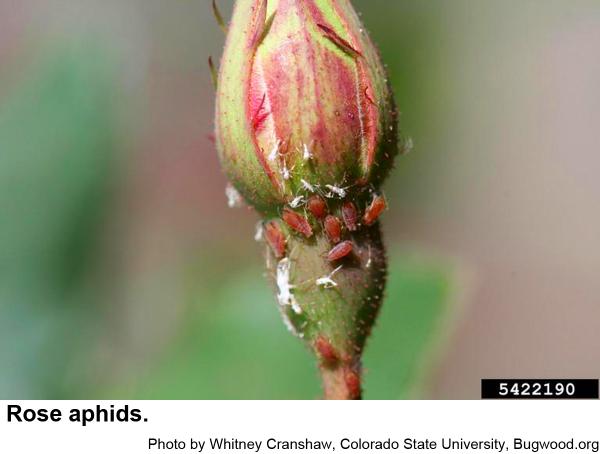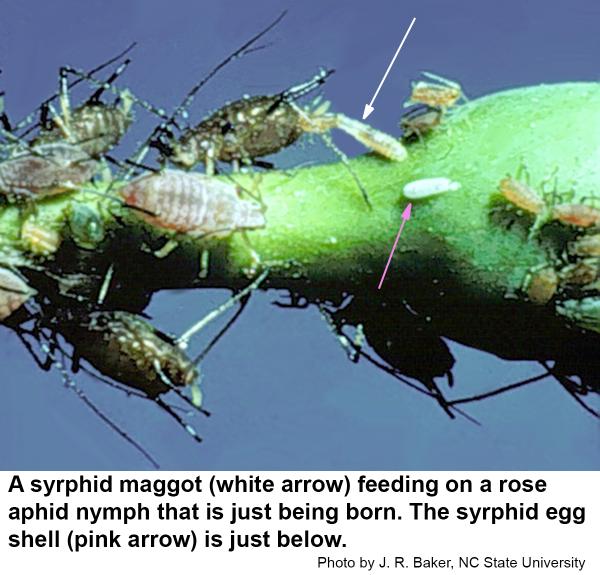Description and Biology
Rose aphids, Macrosiphum rosae, were originally described in Europe, but are now found throughout the United States except in the arid Southwest. This large (almost 1/8 inch) aphid has long, dark legs, antennae, and cornicles. Rose aphids are pink, purplish, or green, and adults may have wings or not. Nymphs resemble wingless adults (except they are smaller than adults). Both green and pink forms occur in the nymphal stages. Rose aphids feed on on tender shoots and buds. High populations reduce quality and quantity of flowers. The entire life cycle may be spent on one host plant. Live young are born throughout the growing season. In late fall, a generation of males and females is produced. These mate, and females then lay eggs on the rose canes. The eggs survive the winter. In spring as new growth resumes, the eggs hatch and the tiny nymphs begin to feed.
Host Plants
Rose aphids feed mostly on rose but sometimes on pyracantha.
Residential Recommendations
Parasitic wasps, lady beetles, and green lacewing adults and larvae prey upon the rose aphid. Except in cool weather, these biological control agents may keep the rose aphid population completely in check. Rose aphids do not seem to be resistant to pesticides. Should they become too abundant, Insecticidal soaps, horticultural oils and imidacloprid insecticides are labeled for roses and should give more than adequate control.
References
- Aphids on Ornamental Landscape Plants. Steven Frank. 2009. Entomology Insect Notes, NC State Extension Publications.
- Insect and Related Pests of Shrubs. Baker, J. R. ed. 1980. NC Agricultural Extension Service publication AG-189. 199 pp.
- Roses: Insect and Mite Pests and Beneficials. Flint, M. L. and J. F. Karlik. 2008. U. California Agr. and Nat. Res. UC IPM. Statewide IPM Program.
- Extension Plant Pathology Publications and Factsheets
- Horticultural Science Publications
- North Carolina Agricultural Chemicals Manual
For assistance with a specific problem, contact your local Cooperative Extension Center.
This Factsheet has not been peer reviewed.
Publication date: May 20, 2016
Reviewed/Revised: Oct. 11, 2019
Recommendations for the use of agricultural chemicals are included in this publication as a convenience to the reader. The use of brand names and any mention or listing of commercial products or services in this publication does not imply endorsement by NC State University or N.C. A&T State University nor discrimination against similar products or services not mentioned. Individuals who use agricultural chemicals are responsible for ensuring that the intended use complies with current regulations and conforms to the product label. Be sure to obtain current information about usage regulations and examine a current product label before applying any chemical. For assistance, contact your local N.C. Cooperative Extension county center.
N.C. Cooperative Extension prohibits discrimination and harassment regardless of age, color, disability, family and marital status, gender identity, national origin, political beliefs, race, religion, sex (including pregnancy), sexual orientation and veteran status.


